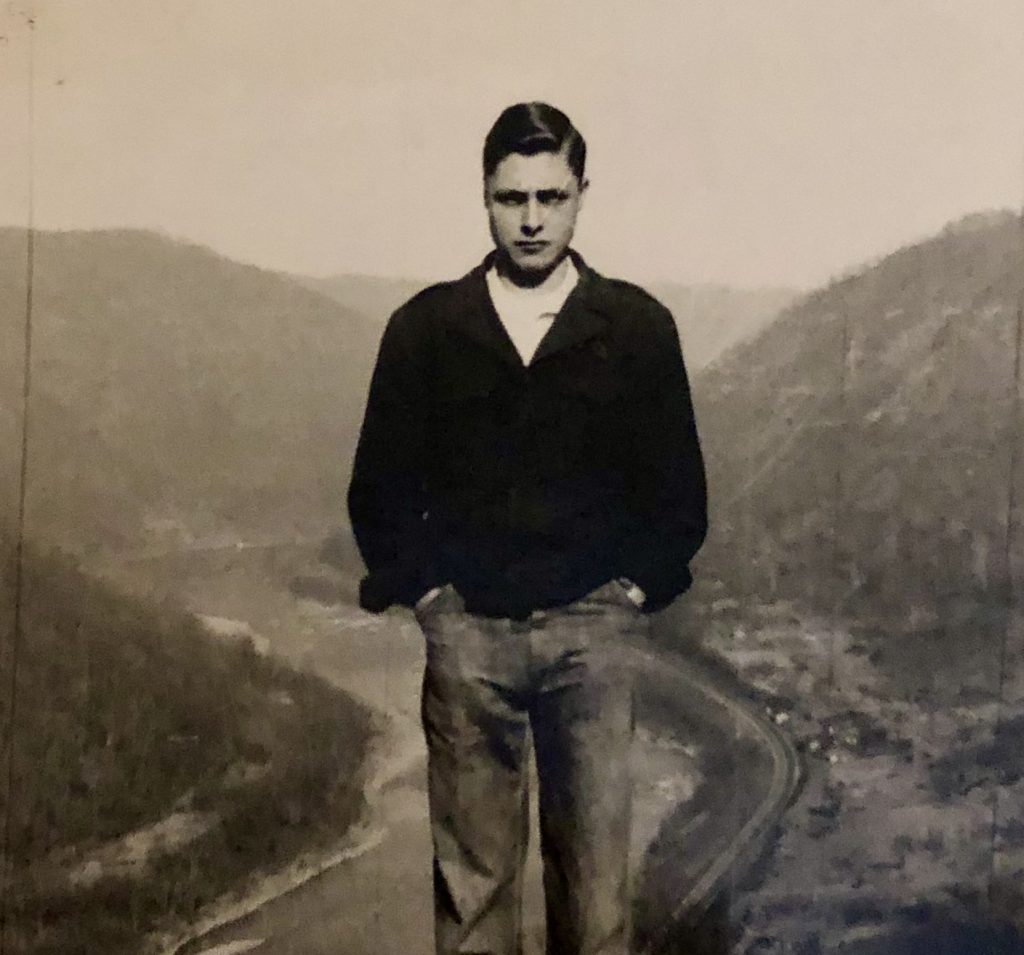A railroader who gave his life for his country is being remembered in a way family members agree is particularly fitting. His name will appear on a roadside sign in his West Virginia hometown, but there’s more to the story than that.
Harold R. Plumley grew up watching Chesapeake & Ohio trains rumble through the riverside hamlet of Prince, surrounded by what is now the New River Gorge National Park and Preserve. Despite its small size, Prince has had a station since the railroad was built, thanks to conditions in a deal the town’s founders made when C&O sought to acquire right-of-way. As a youngster in 1946, Plumley saw the construction of the Art Moderne-design station that still serves Amtrak passengers. Near his family home was a bridge over the C&O tracks that provided an extremely close-up view of trains emerging from Stretchers Neck Tunnel, gaining it the local nickname of “Stretcherneck Bridge.” He walked through the tunnel to get to school and often walked over the bridge as well.
Plumley hired on with the C&O at age 18 and was completing his first full year as a railroader when a notice from the Selective Service Administration informed him his next assignment would be with the U.S. Army. A letter from C&O Vice President Charles Hook assured him that his job would be waiting when he returned.
A few weeks after leaving for basic training, he returned as Pvt. Plumley for a brief visit before deployment. A cousin who picked him up near one end of Stretcherneck Bridge to drive him back to the Army base quoted Plumley as flatly stating, “I’ll never be back.”
His time in Korea was short. Pvt. Plumley served with Company K, 15th Infantry Regiment, 3rd Infantry Division near what was commonly referred to as the “Iron Triangle” on the Korean Peninsula. He was killed in action at the Battle of Outpost Harry on June 11, 1953. In that battle, 5,000 American and Greek soldiers fought more than 13,000 Chinese and North Korean troops. The war ended in July, even before his coffin arrived at the Prince station in August.
Keeping his memory alive for the past 70 years are four surviving siblings, Elizabeth Goodson, and Margaret, Marvin and Thomas Plumley. Marvin picked up the railroad torch from his brother and ended a 40-year railroading career as the station agent in Prince. As a personal tribute to Harold, in 2020, Marvin was able to complete the full restoration of the baggage wagon used to move his brother’s casket, thanks to its donation by Amtrak to the Chesapeake & Ohio Historical
Society. It is displayed at the C&O Railway Heritage Center in Clifton Forge, Va., where Marvin serves as a volunteer. Marvin was called “The Duke of Prince” in an article profiling his career, but he and his siblings credit a few West Virginia legislators with finding the perfect way to honor their brother. In particular, they thanked former State Senator and Minority Leader Stephen Baldwin (D-Greenbrier), who introduced the original resolution to honor Plumley and State Senator Jack Woodrum (R-Summers) for sponsoring it again this year, as well as all those who voted to pass it.
“Not everyone is in a position to accomplish such a lasting tribute. Our family is grateful, said Marvin.
And the uniquely appropriate honor? The Route 41 structure Harold Plumley knew as Stretcherneck Bridge has been replaced by a modern bridge known simply as Stanaford Road Bridge. But now the West Virginia Division of Highways has been directed to prepare and install signs designating it as the “U. S. Army PV2 Harold Richard Plumley Memorial Bridge.”
“This bridge will honor the sacrifice that Mr. Plumley gave for his country, and will serve as a reminder for everybody who crosses it of the gratitude we owe our veterans,” said Sen. Woodrum.
“To be able to get it done in this location is more than appropriate it’s in the right place,” Marvin added.
Pvt. Plumley is interred at High Lawn Memorial Park at Oak Hill.



